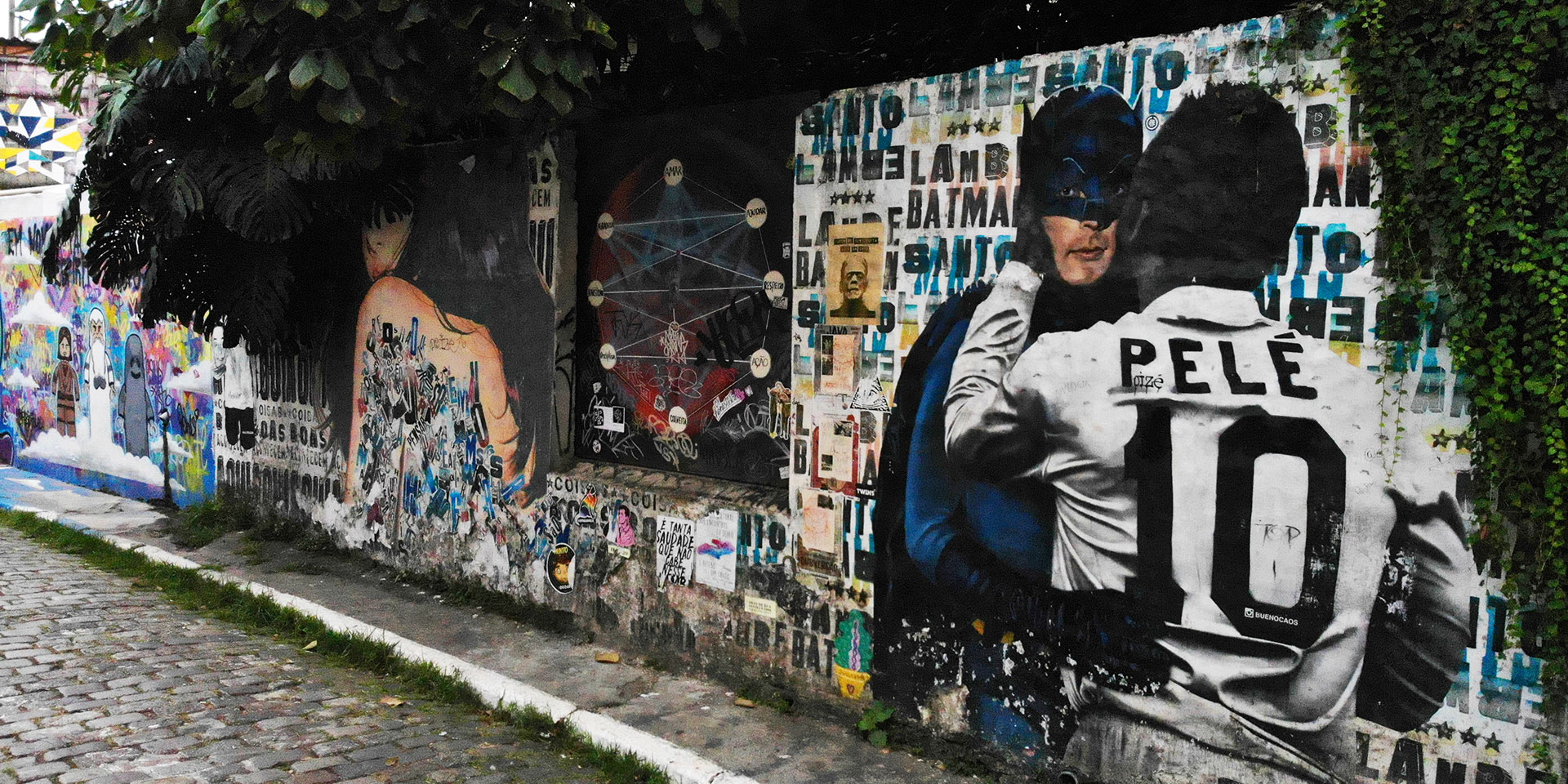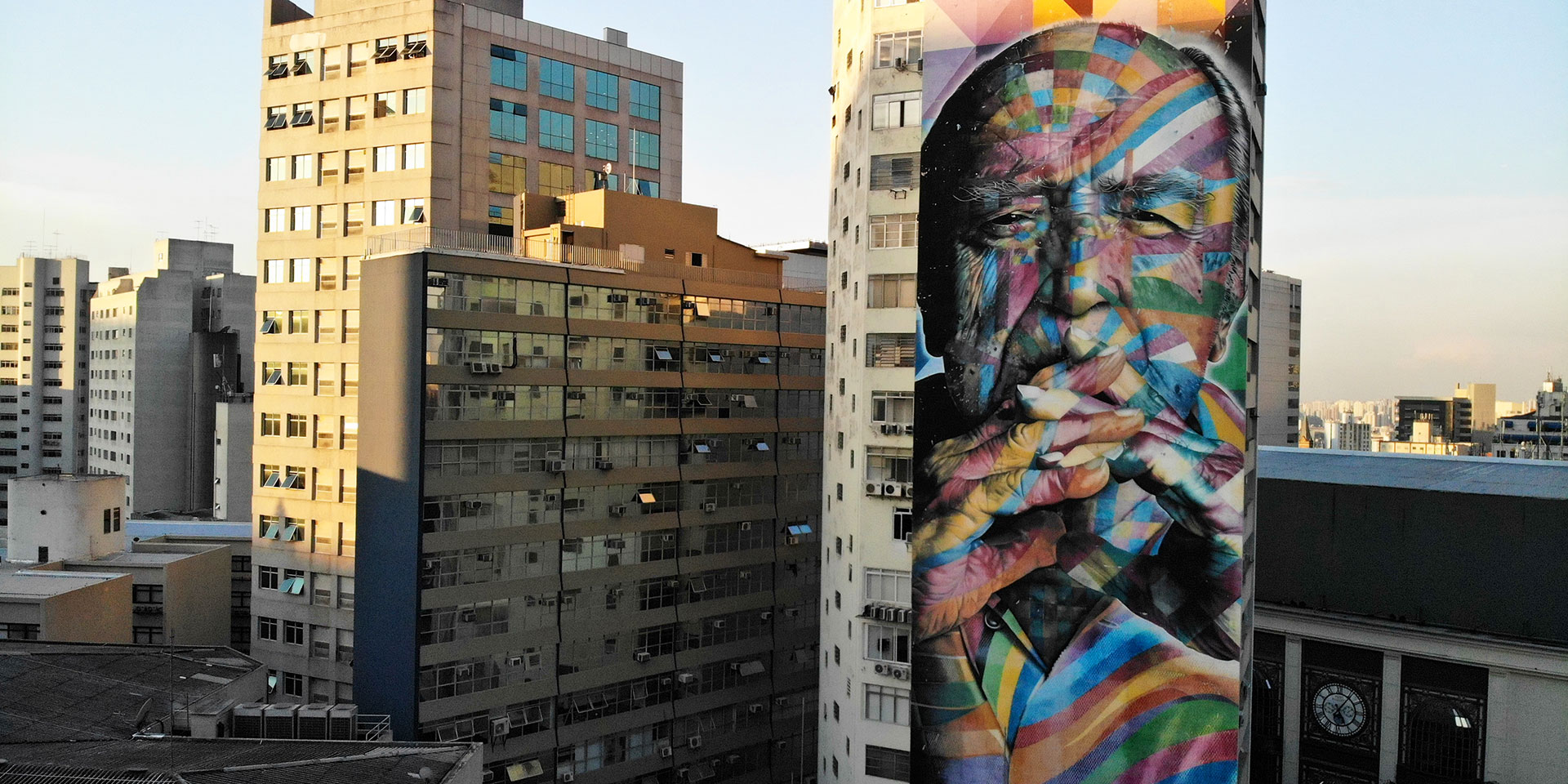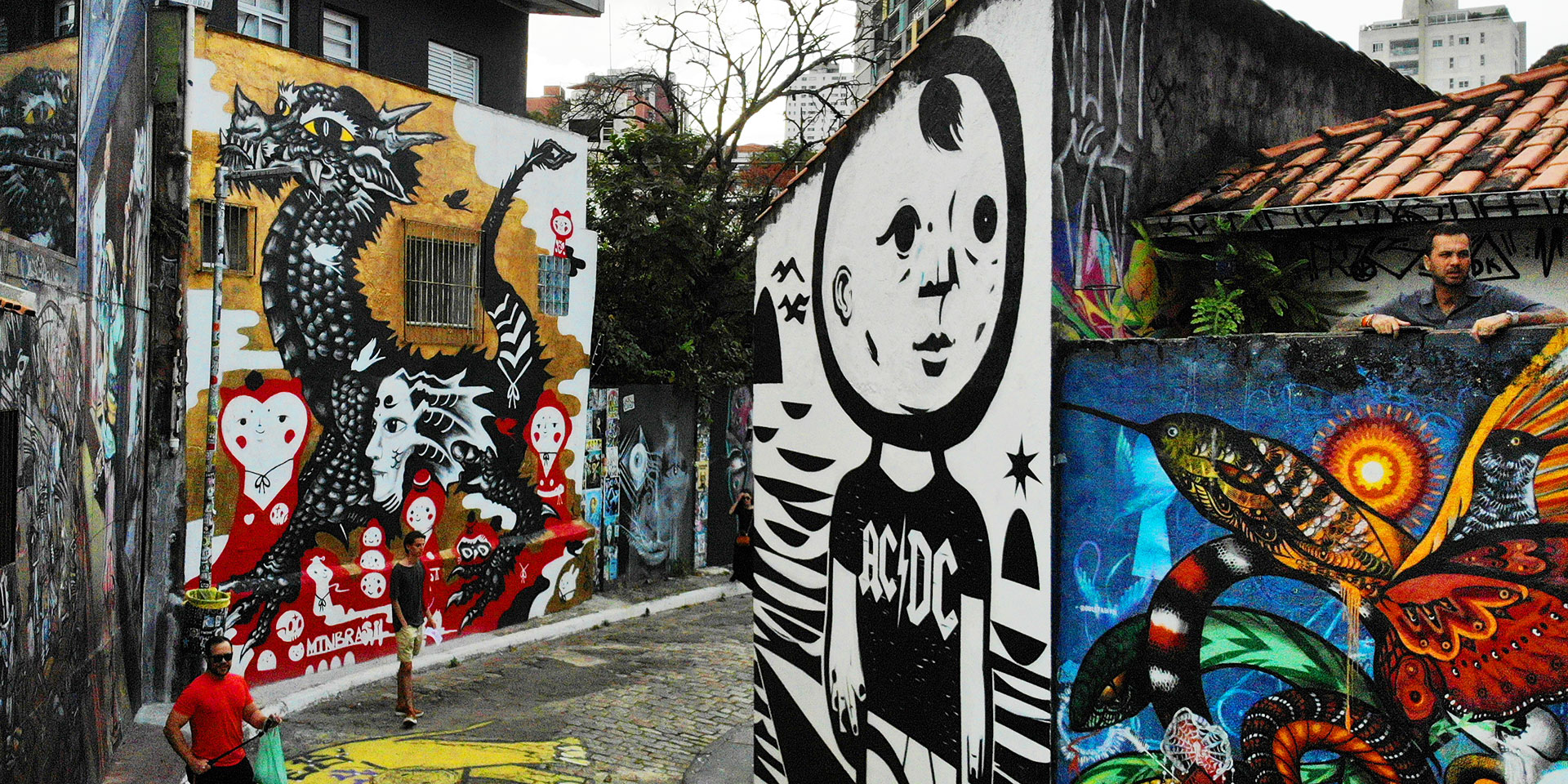When it comes to urban art, São Paulo is one of the world capitals. Its main exponents are internationally recognized stars, whose work has been exhibited in the most prestigious galleries in the United States and Europe.
Street art is so important in the city that there is even an Open Museum of Urban Art and every year sees the celebration of Graffiti Day.
When visiting the streets of the capital for the first time, it’s impossible not to notice that an enormous amount of its walls and buildings have been intervened with messages or drawings, which attempt to fade the chromatic uniformity that had earned the city the nickname of Cidade Cinza or Gray City.
Some of these creations are so famous that many travelers come to the city for the sole purpose of appreciating them in person. By its nature, graffiti is an ephemeral art that can be there one day and not the next, so it’s worth to arm yourself with a camera or phone and help preserve it through photographs.
Vila Madalena

São Paulo’s bohemian neighborhood houses the city’s most famous graffiti corner, Beco do Batman. This alley, whose official name is Rua Gonçalo Alfonso, got its nickname because —back in the 80s— the first mural painted there was precisely that of the superhero.
The rest was filled with color little by little and today it’s one of the city’s main tourist attraction. The graffiti is renewed from time to time, so there will be something different to discover each time you visit.
A few feet away from Beco do Batman is another famous and colorful alley, the Beco do Aprendiz. At the beginning of the century this was a refuge for drug traffickers, but it was revitalized thanks to the mediation of an NGO that invited emerging graphic artists to decorate it.
Today, its walls are signed by national and foreign graffiti personalities.
Open Museum of Urban Art
In 2011, Binho Ribeiro was arrested for painting the pillars that support the elevated section of the blue metro line without authorization. He then prepared, together with other street artists, a project to decorate them with murals.
The State’s Ministry of Culture supported them and the first Open Urban Art Museum in the country was born. More than 30 columns full of lights, shadows and shapes of different styles that —to date— have hosted 3 exhibitions (2011, 2014 and 2017).
Os Gêmeos, Nina Pandolfo and Kobra
These three names are famous in the São Paulo urban scene and their work is dotted throughout the city. Os Gêmeos is a duo of twin brothers, Otávio and Gustavo Pandolfo, who were born and raised in the Cambuci neighborhood, in the center of the city, where some of their first pieces still survive. Their personal stamp consists of their distinctive yellow characters.
The work of Nina Pandolfo can also be seen in Cambuci, she’s one of the few women who has attained an important place in the local graffiti scene and is known for her drawings of girls with huge and expressive eyes.
Eduardo Kobra, with his particular and kaleidoscopic style, is the author of monumental murals on the Paulista Avenue, Ibirapuera Park and Consolaçao, among many other places in the capital. These artists’ fame has crossed borders and their art has reached all the continents.

Day of Graffiti
Every March 27, Graffiti Day is celebrated in memory of the death, in 1987, of Alex Vallauri, one of the first icons of urban art in São Paulo. It’s a festive day in which murals are painted all over the city, and round tables and various cultural activities are held as part of the celebration.
Pixaçao
In the streets of São Paulo, not all urban art is colorful graffiti. There is a style, born as a message of protest during the time of the dictatorship, that is distinguished by being clandestine, marginal and illegible. Its purpose is not aesthetics; it aims to leave a political message and denounce social inequality.
These markings, present throughout the city, especially in places of difficult access, are called pixaçao and their creators are called pichadores.
Urban art, as striking as it is ephemeral, is one of the living creatures in the concrete jungle called São Paulo.




